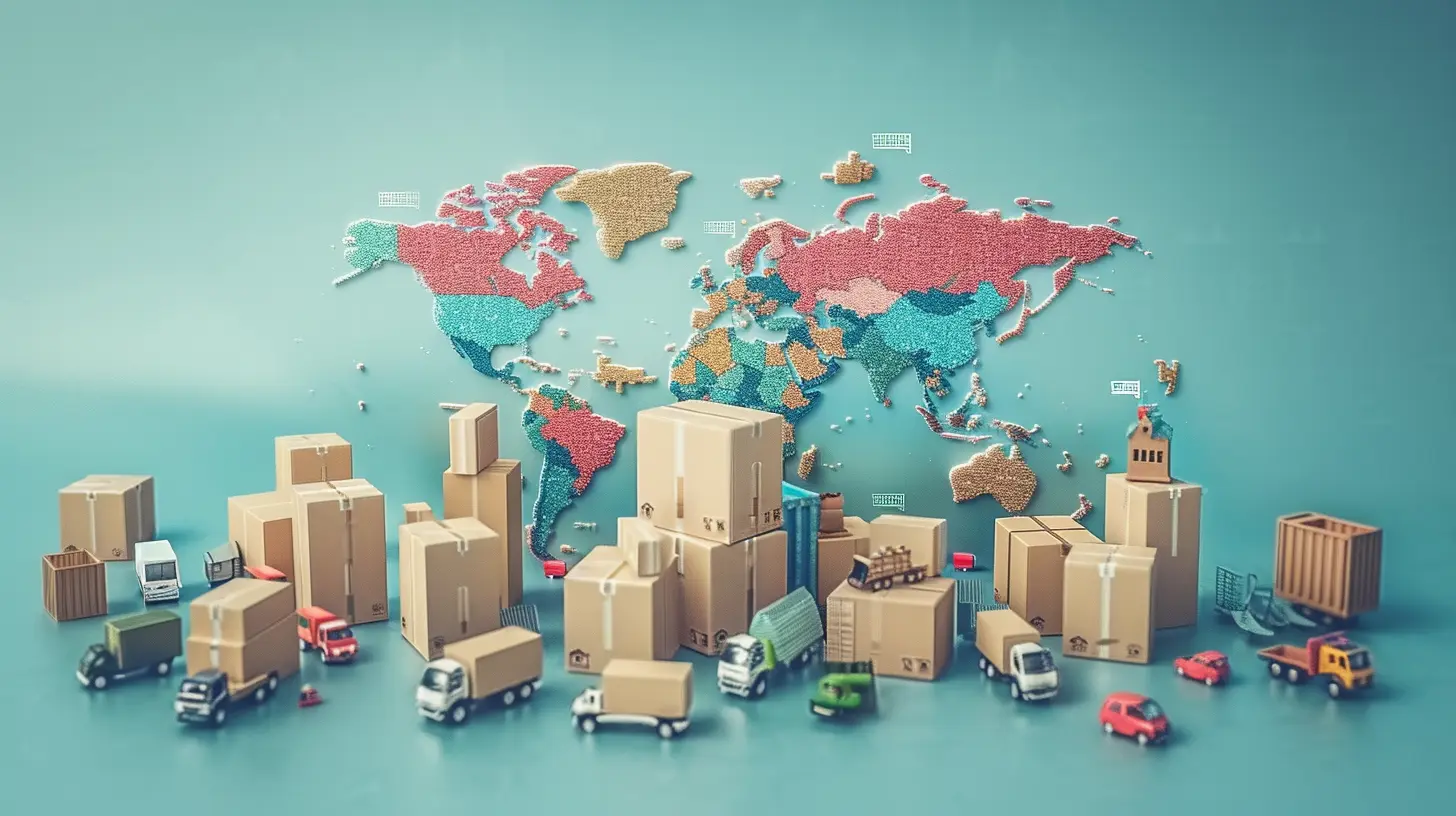6 April 2025
Expanding your e-commerce business globally is an exciting step, but it requires strategic planning, research, and execution. Going international can boost sales, increase brand awareness, and tap into new customer bases. However, it also comes with challenges, such as language barriers, logistics, and market competition.
If you're wondering how to take your online store from local to global, you're in the right place. In this guide, we’ll walk through the key steps to successfully expand your e-commerce business worldwide.

1. Research Your Target Markets
You wouldn’t walk into a new city without a map, right? The same applies to global expansion. Before you start selling internationally, you need to analyze the potential markets.Key Factors to Consider:
- Market demand: Does your product have demand in the new region? Use tools like Google Trends and industry reports to find out.- Competition: Who are the major players in that country? Understanding your competition helps you position your brand effectively.
- Consumer behavior: Every market has unique shopping habits. Some prefer credit cards, while others rely on digital wallets.
- Local regulations: Taxes, import duties, and e-commerce laws vary by country. Make sure you comply to avoid legal issues.
How to Conduct Market Research:
1. Use analytics tools like Google Analytics to check where your international traffic is coming from.2. Conduct surveys and gather feedback from potential customers.
3. Study competitors who are already in those markets.

2. Optimize Your Website for a Global Audience
Your website is the storefront of your e-commerce business, and you want it to be welcoming for customers worldwide. Here are some ways to globalize your site:Implement Multi-Language and Multi-Currency Support
Customers trust websites that speak their language and display prices in their local currency. Use localization tools like Weglot or WPML (for WordPress) to translate content effectively.Improve Website Speed and Performance
A slow-loading site can frustrate international visitors. Use a Content Delivery Network (CDN) to speed up the loading time for users in different countries.Mobile Optimization is a Must
In many countries, mobile commerce is bigger than desktop. Make sure your site is mobile-friendly, fast, and easy to navigate.
3. Set Up International Payment and Pricing Options
You don’t want customers abandoning their carts because they can’t pay easily. Offering familiar and trusted payment methods is critical for conversion.What You Should Consider:
- Accept multiple currencies using payment gateways like PayPal, Stripe, and local payment processors.- Offer region-specific payment methods such as Alipay (China), Paytm (India), or Klarna (Europe).
- Transparent pricing: Display taxes, shipping fees, and conversion rates upfront to avoid surprises at checkout.

4. Develop an International Shipping and Logistics Plan
Shipping is one of the biggest hurdles in global e-commerce. If not handled properly, it can lead to delays, lost packages, and unhappy customers.How to Ensure Smooth International Shipping:
- Partner with reliable couriers like DHL, FedEx, or UPS.- Offer multiple shipping options (standard, express, local pickup).
- Understand import/export regulations to avoid unforeseen customs fees.
Consider Using Third-Party Logistics (3PL)
If handling shipping in-house is too complex, a third-party logistics provider (3PL) can manage storage, packaging, and delivery for you. Services like ShipBob and Fulfillment by Amazon (FBA) make international shipping seamless.5. Localize Your Marketing Strategy
Marketing isn't a one-size-fits-all approach—what works in one country might not click in another. When expanding globally, tailor your marketing strategy to fit local cultures and customer preferences.Social Media and Advertising
- Use local social media platforms (WeChat in China, VK in Russia).- Run region-specific ads on Facebook, Instagram, and Google.
- Collaborate with local influencers to build trust and brand awareness.
SEO and Content Localization
- Optimize your website for local search engines (Yandex for Russia, Baidu for China).- Create region-specific content to appeal to international audiences.
- Use local keywords and translate product descriptions properly (avoid Google Translate!).
6. Provide Excellent Customer Support
Selling internationally means you’ll deal with different time zones, languages, and customer expectations. Your customer support needs to be top-notch to keep global shoppers happy.Best Practices for International Customer Support:
- Offer multilingual support via chatbots or customer service teams.- Provide 24/7 support or have dedicated agents for different time zones.
- Have a clear return and refund policy for international buyers.
7. Leverage Marketplaces for Global Reach
Starting an international e-commerce site from scratch isn’t the only option. Online marketplaces can help you enter new markets faster. Platforms like:- Amazon Global: Reach millions of customers worldwide.
- eBay International: Sell products without setting up a separate website.
- Alibaba & Tmall: Ideal for breaking into the Asian market.
Using these platforms allows you to test demand in new regions without major upfront investment.
8. Stay Compliant with International Laws and Taxes
E-commerce may be digital, but international laws are very real. Each country has different tax regulations, privacy laws, and business requirements.Key Areas to Focus On:
- VAT & GST Compliance: Some countries require you to charge a Value-Added Tax (VAT) or Goods and Services Tax (GST).- Privacy Laws: GDPR (Europe) and CCPA (California) require businesses to protect customer data.
- Trademark & Business Registration: Make sure your brand is legally protected in new markets.
9. Monitor Performance and Continuously Improve
Expanding globally isn’t a one-time effort—it’s an ongoing process. You must track your sales, customer behavior, and marketing efforts to optimize your strategy.Tools to Use for Performance Tracking:
- Google Analytics – Understand where traffic is coming from.- Hotjar – Analyze customer behavior on your site.
- SEMrush or Ahrefs – Optimize international SEO efforts.
Final Thoughts
Expanding your e-commerce business globally takes careful planning and execution. From researching new markets to optimizing your website, localizing marketing strategies, and handling logistics, every step plays a crucial role in your success.While challenges exist, the potential for growth is massive. With the right approach, you can unlock new revenue streams and build a worldwide brand. Are you ready to take your e-commerce business global? Now’s the time to make it happen!





Solenne Lopez
Global expansion isn’t just a goal; it’s a necessity. Stay agile, understand local markets, and innovate to thrive!
April 12, 2025 at 8:14 PM